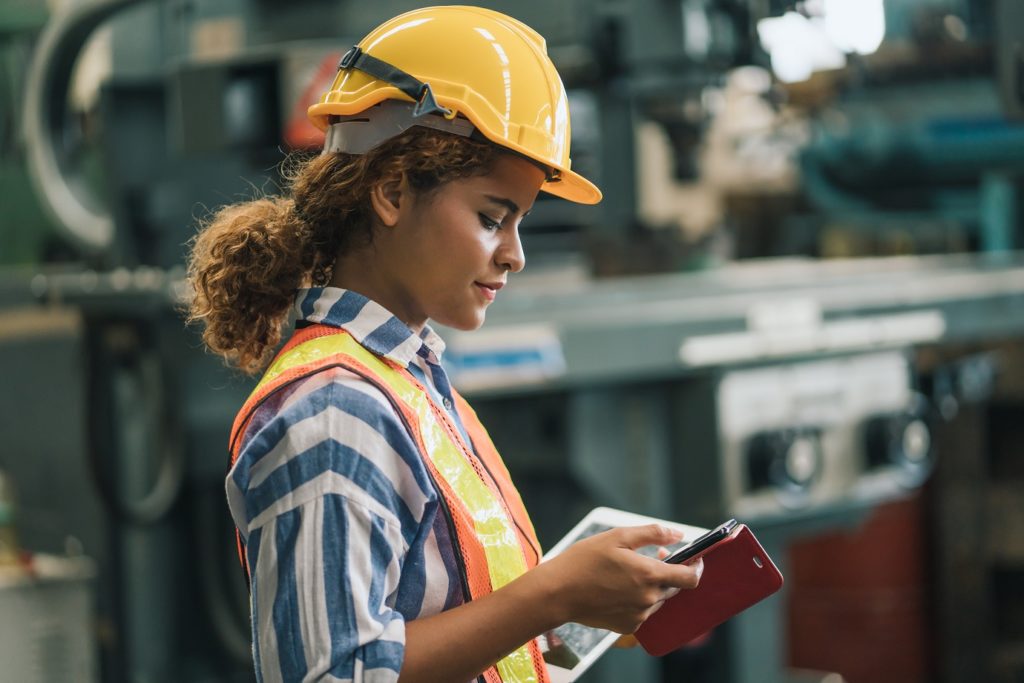Next month, the Victorian State Government will introduce quotas for women in the construction industry.
At a time when the imperative to “build back better” risks being buried under an avalanche of seemingly more pressing concerns, this is an exciting development, and another step on the journey toward more accessible, inclusive employment.
At first glance the targets seem modest: by 2024, women must take up 3 per cent of trade roles on government projects worth more than $20 million, and four per cent of trainee and apprentice labour hours. Seven per cent of non-trade positions must be filled by women, and 35 per cent of management, supervisor and specialist labour roles.
Currently, just 2 per cent of the construction workforce is female. Even in management, the last census had construction managers among the top 5 most male-dominated occupations (behind carpenters, mechanics, electricians and truck drivers), at more than 92 per cent male.
It goes without saying that plenty of women have the skills to create successful careers in construction. But it’s also true to say this policy wouldn’t exist if construction had traditionally been an industry that welcomes them. In my role, I hear the same stories of rigid work practices, sexist, exclusionary cultures and inadequate facilities that of course contribute to these numbers and the scale of the challenge.
Despite more women enrolled in construction and trade courses, there remains a significant gap between those graduating and those who land roles and remain in the industry. The data also suggests women currently employed in construction are more likely to be in supporting roles, with more limited prospects of progressing.
Where workplaces have triumphed against this narrative, the story is rarely told, and even more rarely heard. Heartingly, this is changing. In many of the construction companies I work with and speak to, it already has.
Across large civil engineering firms, you can find women such as CPB’s Abbey White, the Social Impact and Industry Capability Manager on the largest roads project in Australia, the Spark North East Link JV. Abbey is just one example of a woman who feels her skills are being used to their full potential in construction, while working to create more diverse, supportive workplaces within the industry.
Diversity flourishes when cohorts have like-minded peers and feel they can speak out, as well as deliver on their jobs. Across industry, strength in numbers is vital to create a genuine culture of inclusive employment, and this simply won’t happen if left to traditional recruitment. Employers must act with intention, and work to find the right people to help create this change.
Just as importantly, this work doesn’t end with landing the right candidates. It must be embedded throughout organisations to ensure women are engaged, included and contributing to workplaces and culture over the long term.
At a time of urgent skilled labour shortages, employers are fast learning that posting a job ad and waiting for the right candidates to come knocking is no longer going to cut it.
Neither will the idea that quotas give a free ride to certain cohorts – an idea that should have died decades ago. Quotas give employers a compelling reason to look harder at the candidates they attract (and those they don’t), and turn the questions on themselves: how inclusive are our recruitment processes? Who can we learn from, and what more can we do to make our workplace welcoming for everyone?
While ensuring hiring and promotions are fair, and fostering an inclusive and respectful culture, construction – like all industries – will benefit from more women. Consistent research on gender diversity shows that companies with higher gender and cultural diversity outperform industry averages on profitability and economic performance.
Creating genuine inclusive employment, both at an organisational and systemic level, requires genuine intention, which is why policies such as this, and Victoria’s Social Procurement Framework more broadly, are to be applauded.
The next step is with industry, and companies who will design and put in place their own policies and procurement practices alongside NGOs who can quickly scale new solutions.
The policy is there, and this is the moment. Let’s make sure it delivers.
Corinne Proske is CEO of Jobsbank, a non-profit specialising in social procurement and inclusive employment.


